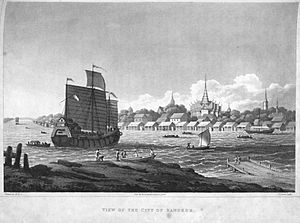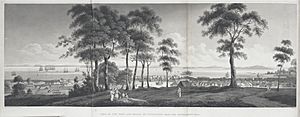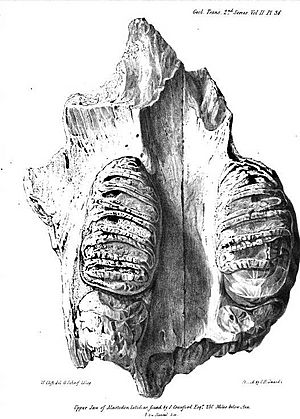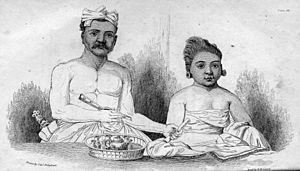John Crawfurd facts for kids
Quick facts for kids
John Crawfurd
|
|
|---|---|
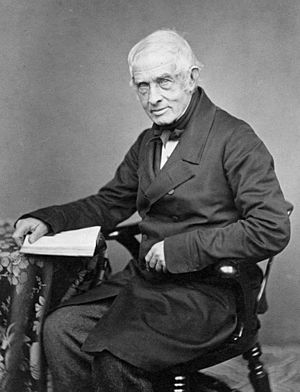 |
|
| 2nd Resident of Singapore | |
| In office 27 May 1823 – 15 August 1826 |
|
| Appointed by | Stamford Raffles |
| Monarch | George IV |
| Preceded by | Major-General William Farquhar |
| Succeeded by | Position abolished Governor of the Straits Settlements |
| Personal details | |
| Born | 13 August 1783 Islay, Argyll, Scotland |
| Died | 11 May 1868 (aged 84) South Kensington, London, England |
| Spouse |
Horatia Ann Perry
(m. 1820; died 1855) |
| Children |
|
| Parents |
|
| Residences | Argyll, Scotland |
| Alma mater | University of Edinburgh |
| Occupation | Colonial administrator |
| Profession |
|
John Crawfurd FRS (born August 13, 1783 – died May 11, 1868) was a Scottish doctor, government official, diplomat, and writer. He is best known for being the second and last British Resident of Singapore.
Contents
Early Life and Medical Career
John Crawfurd was born on Islay, an island in Argyll, Scotland. His father, Samuel Crawfurd, was also a doctor. John studied medicine at the University of Edinburgh and finished his course in 1803 when he was 20 years old.
After his studies, Crawfurd joined the British East India Company as a surgeon. He worked in India, in the areas around Delhi and Agra, from 1803 to 1808. He also served during military campaigns led by Baron Lake.
Time in the East Indies
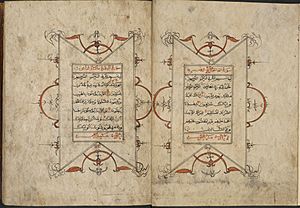
In 1808, Crawfurd was sent to Penang, an island in modern-day Malaysia. There, he began to study the Malay language and culture. It was in Penang that he first met Stamford Raffles, who would later found Singapore.
In 1811, Crawfurd joined Raffles during the British invasion of Java, which was then controlled by the Dutch. The British took control of Java, and Raffles became its Lieutenant-Governor. Crawfurd was made the Resident Governor at the Court of Yogyakarta in November 1811. He took a strong stance against the local ruler, Sultan Hamengkubuwana II.
The Sultan's palace, the Kraton Ngayogyakarta Hadiningrat, was attacked and captured by British-led forces in June 1812.
As Resident, Crawfurd continued to study the Javanese language. He also built relationships with Javanese nobles and scholars. He was very impressed by Javanese music.

Crawfurd also went on diplomatic trips to Bali and the Celebes (now Sulawesi). His deep knowledge of local cultures helped Raffles govern Java.
Diplomatic Missions
Java was returned to the Dutch in 1816. Crawfurd went back to England that year and became a Fellow of the Royal Society. He started writing books. A few years later, he was called back to Southeast Asia for diplomatic work.
Mission to Siam and Cochin China
In 1821, Lord Hastings, the Governor-General of India, sent Crawfurd on a mission. Crawfurd was to visit the courts of Siam (now Thailand) and Cochinchina (now Vietnam). Lord Hastings wanted to learn about Siam's policies towards the northern Malay states. He also wanted to know about Cochinchina's policies regarding French attempts to gain influence in Asia.
Crawfurd traveled with a team that included a skilled astronomer, a medical officer, and soldiers. His wife, Mrs. Crawfurd, also joined the mission. They sailed on the ship John Adam.
The mission arrived in Siam, which was recovering from a war with Burma. Crawfurd found that the Siamese were very interested in buying weapons. He also met a chief from Laos, which was a first diplomatic contact for the United Kingdom. However, Crawfurd's mission faced difficulties and did not achieve much success. He then moved on to Saigon, but the Vietnamese ruler, Minh Mạng, refused to meet him.
Resident of Singapore
In March 1823, Crawfurd was appointed the British Resident of Singapore. His job was to manage the British trading post there. He spent money on improving the Singapore River area.
He also completed an important agreement on August 2, 1824. This agreement, sometimes called the Crawfurd Treaty, finalized the status of Singapore between the East India Company, Sultan Hussein Shah of Johor, and the Temenggong. This agreement was the result of talks that Raffles had started in 1819. Crawfurd also helped with the Anglo-Dutch Treaty of 1824, which divided areas of influence in the East Indies between Britain and the Netherlands.
Crawfurd was friends with Munshi Abdullah, a famous Malay writer. He also helped edit the Singapore Chronicle, which was Singapore's first local newspaper. Streets and bridges in Singapore, like Crawford Street and Crawford Bridge, are named after him.
Burma Mission

In 1826, Crawfurd was sent on another diplomatic mission to Burma. This was after the First Anglo-Burmese War. It was his last official service for the East India Company. His team included Adoniram Judson as an interpreter and Nathaniel Wallich as a botanist.
Crawfurd traveled up the River Irrawaddy to Ava by paddle steamer, the Diana. This ship had been used in the war. At the Burmese court, King Bagyidaw only agreed to a trade deal.
On the return journey, Crawfurd's expedition was delayed for repairs. During this time, he collected many important fossils, including bones and wood. These finds were later studied by scientists in London. They even identified a new species of mastodon (an ancient elephant-like animal) from his collection.
Later Life and Activities
After returning to the United Kingdom, John Crawfurd spent about 40 years involved in many different activities. He wrote extensively as an expert on Eastern cultures, a geographer, and an ethnologist (someone who studies different human cultures).
Political Efforts
In the 1830s, Crawfurd tried several times to become a member of the British Parliament, but he was not successful. He supported ideas like universal suffrage (everyone having the right to vote) and secret ballots (voting in private). He also believed in free trade and opposed monopolies (when one company controls an entire market).
He also supported public education and wanted to reduce military spending. He was against unfair taxes.
Advocate for Free Trade
Crawfurd was a strong supporter of free trade throughout his life. In his 1829 book, A View of the Present State and Future Prospects of the Free Trade and Colonization of India, he argued against the East India Company's policies. He believed they were preventing British businesses from growing in India and not developing Indian cotton.
He later gave evidence to a parliamentary committee about the East India Company's monopoly on trade with China. When the Company's special trading rights were renewed in 1833, the China trade monopoly was finally ended.
Views on Colonization
Crawfurd also shared his opinions on the colonization of Australia. He believed that places like Port Essington on Australia's north coast were not suitable for settlement due to their climate. He generally disagreed with the idea of widespread European colonization of Australia's northern areas.
Lobbying for Asia
Crawfurd also worked as a lobbyist, representing the interests of British traders in Singapore and Calcutta. For example, in 1828–1829, he campaigned against a new tax on public documents and newspapers in India. He argued that this tax would harm trade and knowledge.
In 1855, Crawfurd supported a move to make the Straits dollar an independent currency in Singapore. He argued that it was a better currency for trade than the Indian rupee.
In 1868, Crawfurd helped form the Straits Settlements Association. This group was created to protect the interests of the British colony of Singapore and its surrounding areas. Crawfurd became its first President.
Last Years and Writings
John Crawfurd was elected President of the Ethnological Society in 1861. He passed away at his home in London on May 11, 1868, at the age of 85.
Crawfurd wrote many books and papers. Some people have seen his views as sometimes contradictory.
Works as a Diplomat and Traveler
After his mission to Burma, Crawfurd wrote books and papers about Eastern subjects. His experiences from his diplomatic missions were published in his Journals in 1828 and 1829.
- Journal of an Embassy to the Court of Ava in 1827 (1829)
- Journal of an Embassy to the Courts of Siam and Cochin-China, exhibiting a view of the actual State of these Kingdoms (1830)
- Descriptive Dictionary of the Indian Islands and Adjacent Countries (1856)
Works as a Historian
Crawfurd's most important historical work was History of the Indian Archipelago (1820), which came in three volumes. In this work, Crawfurd often criticized what European nations had done in the parts of Asia he covered.
He also co-wrote An Historical and Descriptive Account of China (1836) with several other authors.
Works as an Orientalist
- Grammar and Dictionary of the Malay Language (1852)
Crawfurd collected many old writings and manuscripts during the capture of Yogyakarta. Some of these are now kept in the British Library.
Crawfurd also suggested that the Cham language belonged to the Austronesian languages family. This idea was not popular at the time, but scholars later agreed with him around the 1950s.
Works as an Economist
Crawfurd had strong opinions about what he saw as the slow economy of India during his time. He believed it was due to weak financial systems compared to Europe. He wrote about these ideas in a pamphlet called A Sketch of the Commercial Resources and Monetary and Mercantile System of British India (1837). He thought India should focus on being a source of raw materials.
Works as an Ethnologist
Crawfurd produced many works about different human cultures, which is the field of ethnology. He wrote a lot about this topic, especially in the 1860s.
Views on Human Races
Crawfurd held polygenist views. This means he believed that different human groups had separate origins, rather than all coming from a single common ancestor. He thought that different races were created separately by God in specific regions. He also believed that languages had separate origins and that races might even be different species.
He often used the idea of "domestication" as a comparison for human societies. In a paper from 1866, On the Physical and Mental Characteristics of European and Asian Races of Man, he argued for the superiority of Europeans. He used European military power as evidence for this idea. However, his views were challenged by others, including Dadabhai Naoroji.
Crawfurd also spent a lot of effort criticizing Charles Darwin's theories of human evolution. As someone who believed in polygenism, Crawfurd was an early and important critic of Darwin's ideas.
Family Life
John Crawfurd married Horatia Ann Perry. In 1821 and 1822, Mrs. Crawfurd traveled with her husband on his mission to Siam and Cochin China. She even went ashore on an island in the Gulf of Siam, where she made a good impression on the local people.
Their son, Oswald John Frederick Crawfurd, born in 1834, later became a writer. The Crawfurds were also friends with famous writers like John Sterling and Thomas Carlyle.



